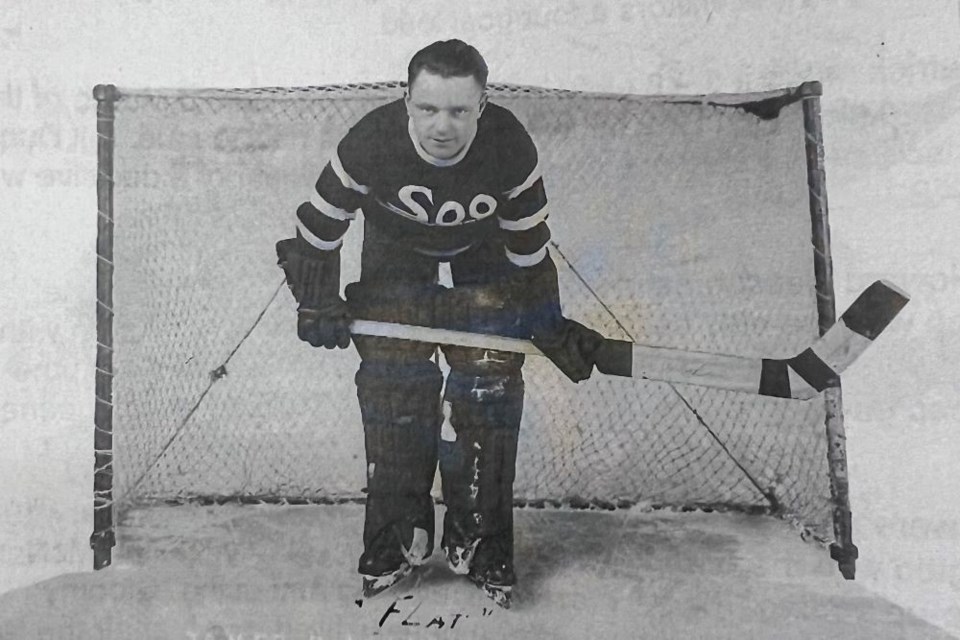The Northern Ontario Hockey Association (NOHA) was established on Oct. 8, 1919, in the small mining town of Cobalt.
As the first official hockey league dedicated to the north, nine teams from across the province's northeastern region would compete in the newly formed league. The Northern Group consisted of South Porcupine, Timmins, and Iroquois Falls. The Central Group contained the tri-towns of New Liskeard, Haileybury, and Cobalt. Lastly, the Southern Group featured North Bay, Sudbury, and Sault Ste. Marie.
Putting a team together in Sault Ste. Marie was simple, as talented players had already been competing in the Upper Peninsula Hockey League. The team’s first head coach was George McNamara, a 1914 Stanley Cup winner with the Toronto Blue Shirts in 1914 and a World War I veteran.
The next step was to choose a name for the fledgling team. While the team name was originally supposed to have been chosen through a public vote, McNamara jumped the gun by choosing the name Greyhounds. According to the coach, “a greyhound is much faster than a wolf”, throwing subtle punches at the team’s divisional rivals, the Sudbury Wolves. Although unconfirmed, the team’s red and white colours were likely selected as an homage to the Detroit Red Wings, the closest NHL team in proximity to the city.
The Greyhounds lineup featured goaltender James “Flat” Walsh, along with defensemen Morris Fisher, and Jim Fahey. Playing at centre position, Harry Quesnell was flanked, by left-winger Roy “Gloomy” Lessard and right-winger Johnny Drury. Quesnell was eventually replaced by Thessalon’s Bill Phillips, and moved to the substitution line with Jack Fulton, “Nip” Greer, Art Nichols, L. Martel, Roy Blainey, Bill Crawford, and Billy Wilson. “Piggy” Wilson served as the backup goalie.
The NOHA season consisted of an eight-game schedule. The Greyhounds would face the North Bay Trappers and the Sudbury Wolves four times each. The winner of the Southern division would then face the winners of the Northern and Central groups in the playoffs, with the ultimate victor representing the NOHA in the Dominion of Canada Championship for the coveted Allan Cup.
The first hockey game ever played by the Sault Ste. Marie Greyhounds was a home game held on Friday, January 9, 1920, in the Gouin Street Arena against the Sudbury Wolves. As the team names suggested, the Greyhounds were the smaller but faster group compared to the heavier Wolves.
The Wolves drew first blood, with “Shorty” Green scoring the first goal in NOHA history. Green would later draw his own blood by losing three teeth in a collision with his own defenseman. By the end of the first period, Sudbury led 3-0 over the Greyhounds. By the end of the second, the score was 4-0. Shortly after, the Wolves made it 5-0 in the third period; Gerald Munro scored the Greyhounds’ first two goals in franchise history. Unfortunately, the Wolves continued dominating the game, winning by a score of 7-2.
After a fairly clean opening game, the rematch in the Nickel City a week later was plagued with penalties. However, the Greyhounds battled to a 5-4 victory over the wolves.
By the end of the short season, both the Greyhounds and the Wolves were undefeated against the North Bay Trappers with one game left to play.
Heading into the final regular season game, Sudbury had the upper hand, with two of three wins over the Sault. If the Greyhounds were victorious, they would force a sudden-death winner-take-all deciding game.
Game eight was played on Saturday night, Valentine’s Day, 1920. The Greyhounds had arrived so late to the arena in Sudbury that they had changed into their jerseys and skates on the train, and jumped immediately onto the ice. The Greyhounds were visibly tired and noticeably slower than the hard-hitting Wolves. The game was rugged and dirty with referee Flynn enforcing minimal control over the players.
Within the first few minutes of play, the Wolves clawed to an early 3-0 lead. The two teams traded goals in the second period, with the Greyhounds scoring another to cut the deficit down to 4-2, but the goal was denied, even after the goal referee insisted the puck hit the back of the net. The Wolves remained in control of the third period, and when the final buzzer rang, they had defeated the Greyhounds 6-2.
The victorious Sudbury Wolves continued onward to beat both New Liskeard and South Porcupine for the NOHA Cup. From there, they travelled to Toronto and eventually lost to the U of T Varsity Team 4-3, coming one goal short of the National Championship.
For the Sault Ste. Marie Greyhounds, the defeat left a bitter taste in their mouths. However, as the only team in the NOHA to win against the Sudbury Wolves, the future seemed promising. The team was determined to return faster and more skilled in the following season. Over the next five years, the team would progress to dominate the league, culminating in winning the prestigious Allan Cup in 1924.
